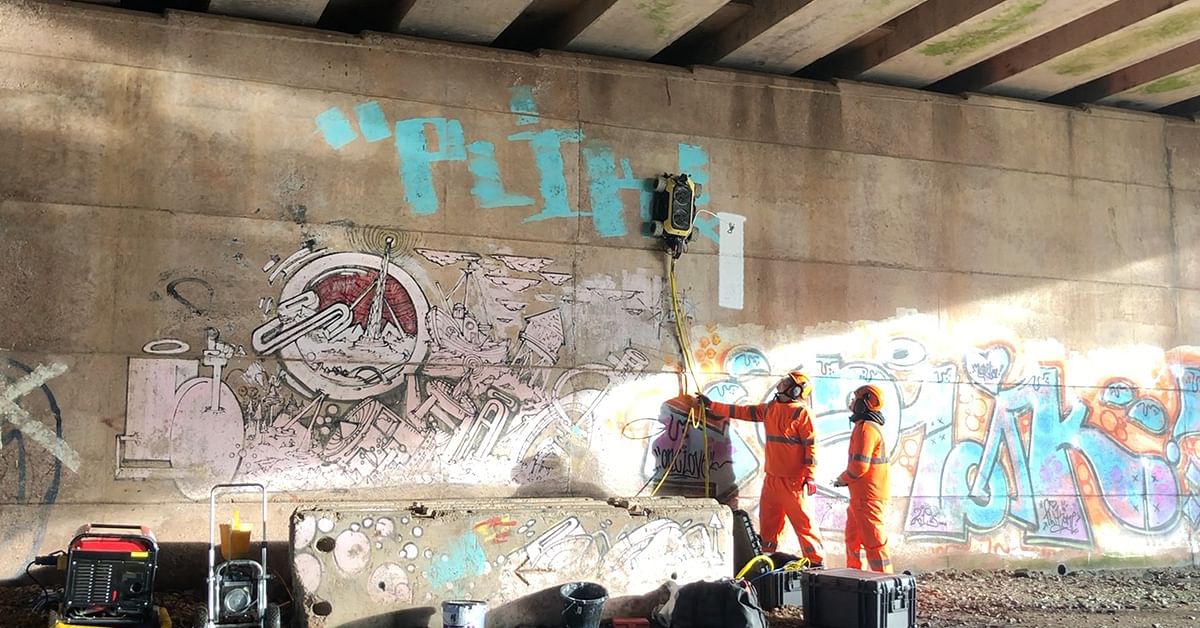COINS names shortlist for 2022 Grand Challenge, seeking new approaches to construction
By Niall Patrick Walsh|
Tuesday, Aug 30, 2022

Related
Construction software specialists COINS has unveiled the shortlist for their COINS Grand Challenge, which seeks to uncover new ideas or innovative approaches to solve issues related to the construction industry. The ten shortlisted projects span firestopping in mass timber and zero emissions building envelopes to food waste-based concrete and AI-powered carbon metrics.
“Working with leading construction companies, private investors, venture capitalists and academia, the COINS Grand Challenge provides an opportunity that may not otherwise exist for people to present their ideas to leaders in the industry, win valuable prizes and potentially gain funding and support to pursue their ideas,” the organizers say.
Prizes in contention include a COINS Investment Prize of up to $115,000 while other case prizes are distributed among the competition's two entry categories: open and undergraduate. The winners will be announced following final judging in October 2022.
The shortlisted entries are as follows, while this year's cohort can be compared to previous editions by reviewing our previous coverage here:
Open Competition
Firestop in Mass Timber by Sharron Halpert, President of Halpert Life Safety Consulting
"The development of bespoke firestop solutions for mass timber construction will mean that the newest construction modality, that is uniquely sustainable, can also be uniquely safe. As current existing solutions are complex and easy to install incorrectly this will improve life safety."
Zero Emissions Building Envelope by Peter M. Neil, Founder of HAUS Technologies Limited
"This sustainable high-performance building system driven by digital manufacturing technology will create the first global ‘climate resilient homes’. CAD data is used to weave a digital thread through the industrial processes of this patented composite building system. Combining the productivity of off-site manufacturing with on-site structural completion this will result in a more affordable, sustainable and energy-efficient housing solution."
The Latest Innovation in Solar Roofing by Tarvo Kärgenberg, Business Director at Solar Infrastructure & PPA Solutions
"Solarstone’s pioneering design for integrated solar modules is an aluminum framing kit called Click-on, that transforms standard PV panels into 2 in 1 weatherproof roofing material. Solarstone is the latest innovation in solar roofing, combining contemporary aesthetics with the most advanced solar technology."
Fast Eco Construction System by Kristijan Nelkovski, Technical Advisor at Thermo Modular LLC
"This innovative construction system utilises a mixture of perlite concrete which is crafted through a proprietary process and molded into modular construction blocks. These lightweight and completely self-supporting thermal insulators maximise interior space and maintain a constant temperature in both winter and summer, using the minimum amount of energy for heating and cooling."
Wall Climbing Robot for Inspection of Critical Infrastructure by Jack Cornes, CEO & CoFounder of HausBots
"HausBots have developed a patent-pending wall-climbing robot designed for the inspection and maintenance of the built environment. Capable of climbing up any surface this will increase safety, reduce cost and speed up work at height."
Delivering Construction Carbon Metrics with AI by Isabelle Gough, CEO of Cercula
"To lower carbon in the built environment, we must measure construction carbon. However, quality carbon data is difficult to access and handle. Cercula presents an AI powered automated delivery system for construction carbon, that integrates easily into the construction workflow through Excel, BIM or API."
Undergraduate Competition
Optimising Building Circularity Using BIM and LCA Data Repositories by Subarna Sivashanmugam of Teeside University (United Kingdom)
"A digital platform, driven by linked-data technologies to optimise building circularity through semantic integration of BIM and LCA databases. A unified data structure, interoperability, and automated system are the critical areas of this work. This platform allows the supply chain to measure and manage life-cycle emissions resulting from excessive raw material consumption and waste generation."
Passive Cooling of Urban Spaces by Nathan Chen of the University of Pennsylvania (United States)
"Passive Daytime Radiative Cooling (PDRC) materials are designed to cool urban spaces without excess energy consumption or emission of harmful chemicals. Given their relative ease and cost-effectiveness of manufacture, PDRC materials promise to drastically improve the energy efficiency of buildings while combating the growing issue of rising urban temperatures."
Food Waste Interlocking Concrete with Cladding (FWC+) by Lai Jun Tung, Chen Zi Mun and Hiew Wing Yian of Universiti Sains Malaysia (Malaysia), Universiti Tunku Abdul Rahman (Malaysia), and Nanyang Technological University (Singapore)
"FWC+ marries a cleaner, cheaper construction process and utilisation of sustainable food waste materials. This product uses organic waste as ingredients to produce cement and coarse aggregates. Coupled with biomass energy to fuel the production process, the operational product and manufacturing process produce less carbon emission than traditional concrete production."
Safer Concrete Waterproofing Ingredients by Edwin Nsoh Awariyah of Ashesi University (Ghana)
"Melamine, a toxin that was illegally added to milk, resulting in deaths, is returning, but in the form of a waterproofing ingredient. It bioaccumulates in organisms until it reaches us at the end of the food chain. The solution? Replacing with melamine-free alternatives. Polyurethane is a less expensive, and safer alternative."


Share
0 Comments
Comment as :